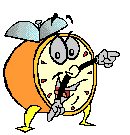Here is the video we created with the help of the amazing Mrs. Klipfel!
Tag Along in K with Mrs. I
Wednesday, June 17, 2015
A New Home For Mrs. I's Hermit Crab
As an end of year activity, the students worked very hard in small groups to create new sea creatures to create our own version of A Home For Hermit Crab. Each group worked together to create a 3-D sea creature for our Hermit Crab's new home. We then did a shared pen writing, where all of the students worked together to write a new version of the story, using their own sea creatures.
Here is the video we created with the help of the amazing Mrs. Klipfel!
Here is the video we created with the help of the amazing Mrs. Klipfel!
Monday, May 25, 2015
Touch Tank
Touch Tank Visit by Slidely Slideshow
Sunday, May 24, 2015
Sandy Point Field Trip
 |
| Mrs. I's class at Sandy Point |
Sunday, May 17, 2015
Tide Pool Fun
This past week, we've been learning about the different sections of a tide pool - splash zone, high tide, medium tide, low tide, and the animals and plants that live in each of the areas.
We learned a TON about sea stars, too. We not only created sea stars for our tide pool, but we also learned how to use a graphic organizer to help us remember the facts we've learned about sea stars and to write full sentences about them. The students really enjoyed this type of non-fiction writing. I cannot wait to see how their writing develops over the next few weeks as we continue to write about the sea animals that live in tide pools.
Here is a sample of writing and the beginnings of our classroom tide pool. The next few weeks will be exciting and fun to say the least - I cannot wait to keep sharing your student's wonderful work!
 |
| This student wrote about the sea star's stomach and how it comes out of the mouth, that it can stick to rocks, and that their arms are called rays. |
 |
| The beginnings of our tide pool with our sea stars, mussels, and barnacles! |
 |
| The best part of our tide pool bulletin board is that we made it 3-D! Thank you to all of the families for sending in recyclable materials. |
Sunday, March 22, 2015
Wait, there are books that have real things in them?!
What are the differences between
FICTION and NON-FICTION?
 |
 |
The students noticed really wonderful text features of nonfiction books including photographs, table of contents, index, word list, and most importantly, that the books we thought were nonfiction had all real things in them. Last week, one student even saw that nonfiction books can teach us things!
 |
| When asked which book their group thought was fiction, they held up the books on the left. When asked which were nonfiction, they held up the books on the right. |
 |

Saturday, March 14, 2015
Tell Me How It Made You Feel..

 |
| Each time we begin Writer's Workshop we come together and help Mrs. I. write a story making sure we use what we know about letters and sounds and our sight words! |
 |
| I have a wiggly tooth. Hannah wiggled one of my teeth. My one tooth felt like it was bleeding. [This writer is exploring adding in details about feeling physical things (which is still a feeling!)] |
 |
| I went bike riding with my sister. It made me happy. And my mom (was there). |
 |
| I saw the movie Big Hero Six. I went with mommy and daddy and Mary. I love it. |

Wednesday, March 11, 2015
Thank You, Mystery Reader!
Subscribe to:
Posts (Atom)





